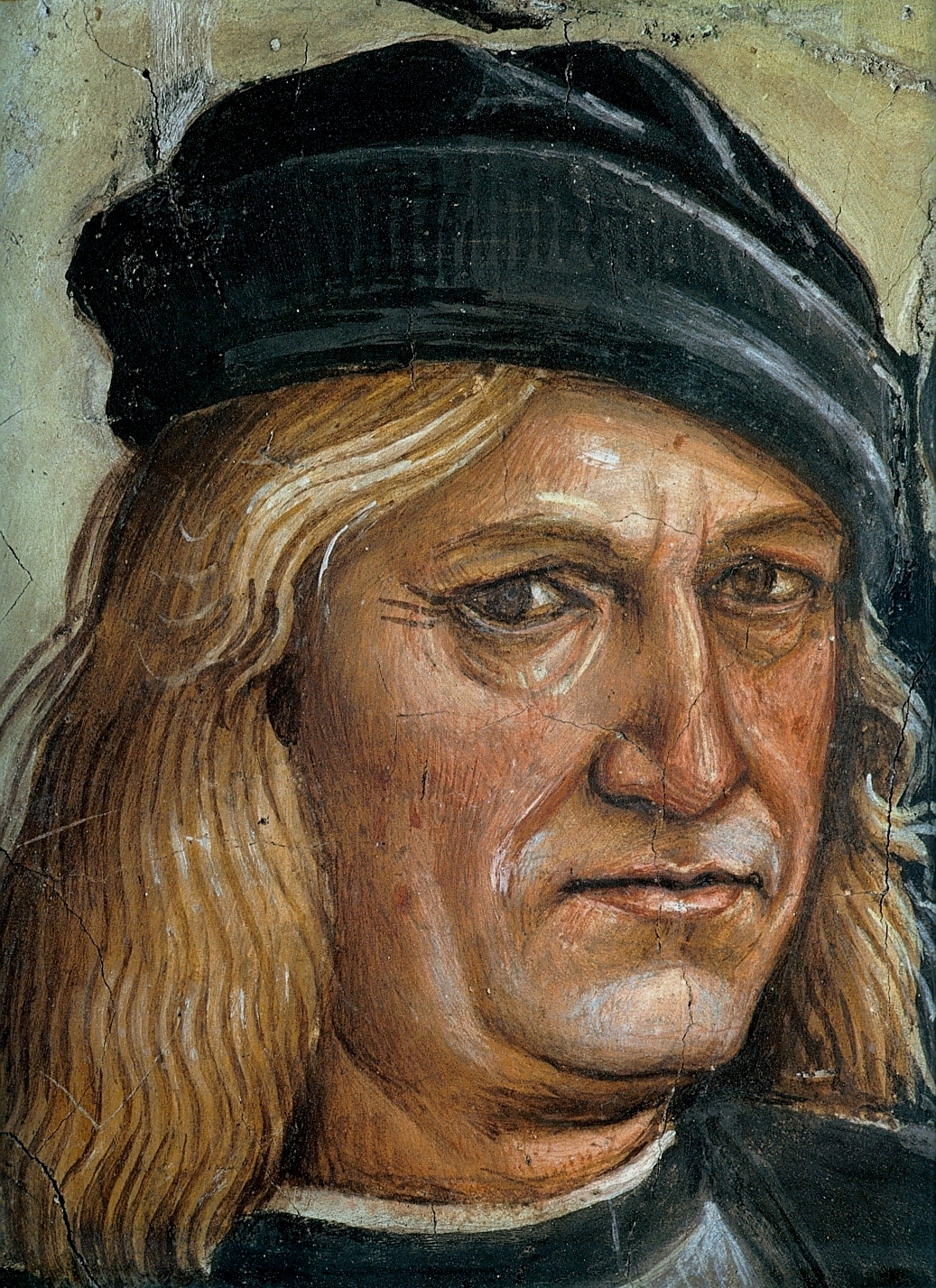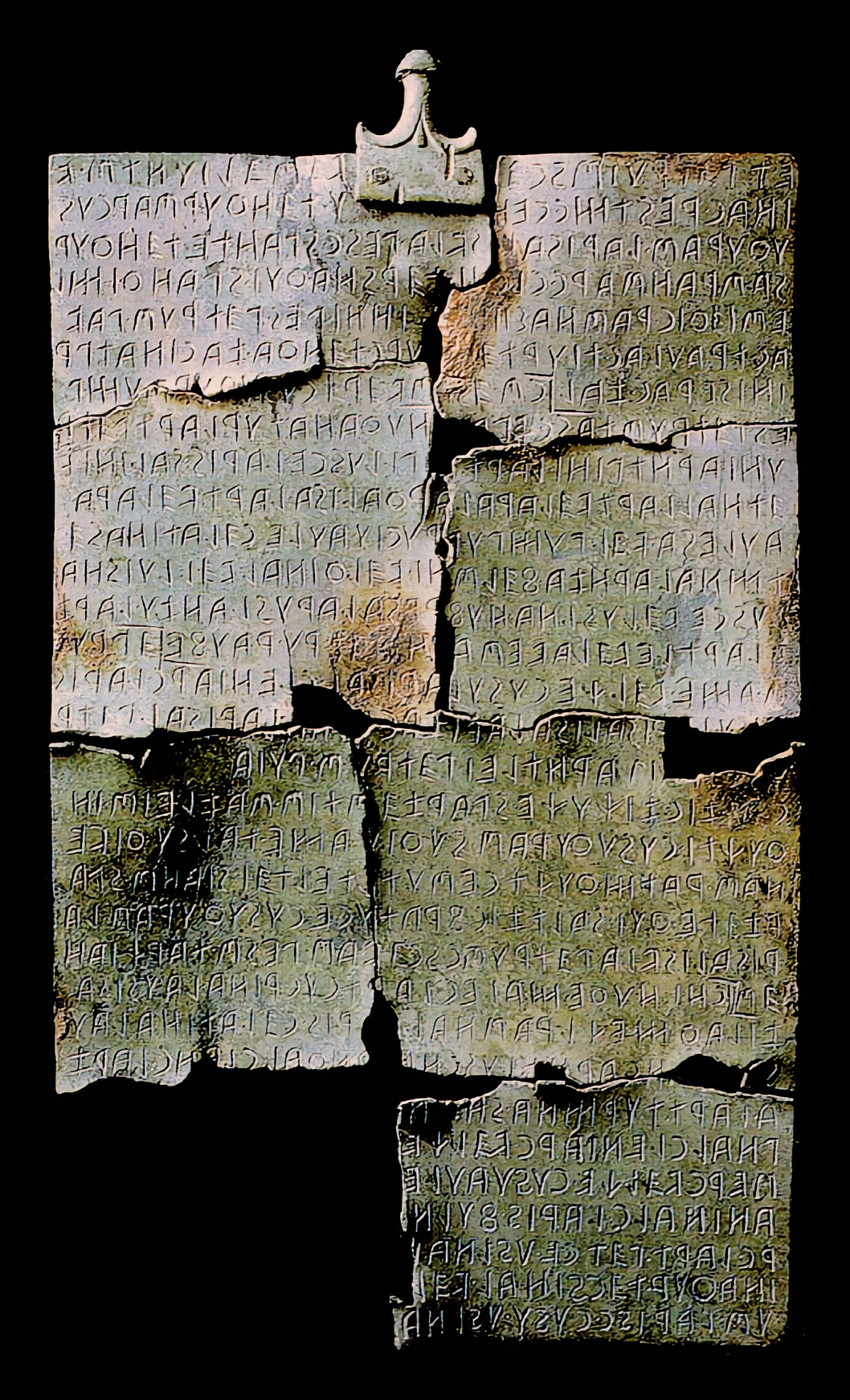|
Communion Of The Apostles (Signorelli)
The ''Communion of the Apostles'' is a painting by Italian Renaissance artist Luca Signorelli, dating from around 1512. It is now in the Diocesan Museum of Cortona, Tuscany, Italy. Description The iconography of the painting was rather unusual for Italy, and had been indeed inspired by Justus van Gent's '' Corpus Domini Altarpiece'' (1472–1474), that Signorelli had seen during his stay at Urbino. Above an ancient style background, similar to Perugino's works, Signorelli painted Christ in the center of the scene, surrounded by brightly dressed apostles in a pyramidal composition. Christ holds a dish with the hosts he is delivering them. Among the apostles, Judas Iscariot is portrayed while turning towards the seer: at the same time, he is hiding into his purse the coin of his betrayal. The altarpiece was most likely accompanied by a predella. Three of its panels have been identified with the ''Meeting of the Pilgrims on the Road to Emmaus'' and ''Supper in Emmaus'' in the Julius ... [...More Info...] [...Related Items...] OR: [Wikipedia] [Google] [Baidu] |
Luca Signorelli
Luca Signorelli ( – 16 October 1523) was an Italian Renaissance painter from Cortona in Tuscany, who was noted in particular for his ability as a draftsman and his use of foreshortening. His massive frescos of the ''Last Judgment'' (1499–1503) in Orvieto Cathedral are considered his masterpiece. In his early 40s he returned to live in Cortona, after working in Florence, Siena and Rome (1478–84, painting a now lost section of the Sistine Chapel). With an established reputation, he remained based in Cortona for the rest of his life, but often travelled to the cities of the region to fulfill commissions. He was probably trained by Piero della Francesca in Florence, as his cousin Giorgio Vasari wrote, and his Quattrocento style became rather out of date in the new century. Cortona will host a major exhibition in 2023 to celebrate the 500th anniversary of his death. Biography He was born Luca d'Egidio di Ventura in Cortona, Tuscany (some sources call him Luca da ... [...More Info...] [...Related Items...] OR: [Wikipedia] [Google] [Baidu] |
Diocesan Museum (Cortona)
The Diocesan Museum in Cortona is an art museum in Cortona, Tuscany, Italy.''Museum of the Diocese of Cortona: a guide to its history and art'' by Edoardo Mori (1998) pages 2–4 Located on the former site of the local Church of Gesù, it houses works of art by artists such as Fra Angelico, Pietro Lorenzetti, Bartolomeo della Gatta, Luca Signorelli and Sassetta. The oldest item in the museum is a marble Roman sarcophagus (2nd century AD), depicting depicts the battle of Dionysus. A room in the museum is specifically dedicated to the works of Luca Signorelli and his workshop, and emphasizes the bond between Signorelli and his hometown, and correspond to the artist's last years of work, from 1512 to 1523, the year of his death. Ten of the works bear the personal signature of Signorelli, the others are assumed to be from his workshop. The large tempera on panel depiction of the ''Lamentation of Christ'', which used to be in the church of S. Margaret of Cortona, was called " ... [...More Info...] [...Related Items...] OR: [Wikipedia] [Google] [Baidu] |
Cortona
Cortona (, ) is a town and ''comune'' in the province of Arezzo, in Tuscany, Italy. It is the main cultural and artistic centre of the Val di Chiana after Arezzo. Toponymy Cortona is derived from Latin Cortōna, and from Etruscan 𐌂𐌖𐌓𐌕𐌖𐌍 (curtun). This may be related to Indo-European *ghortos meaning "enclosed place" and consequently walled city like Latin hortus, German Garten, Italian orto, English yard, and Slavic grad. The name may also be linked to the Phrygian town of Gordium in Anatolia, although the founding myth for the latter is that it was named after founder, King Gordias. However, the Etruscan language is probably a pre-Indo-European language, and therefore if it was named by the Etruscans, an Indo-European etymology is uncertain. The Umbrian language, by contrast, is an Italic language, so if it was named by them, a link to Indo-European roots would be more likely. George Dennis suggests that it was known by many names "Corytus, Croton, Croto ... [...More Info...] [...Related Items...] OR: [Wikipedia] [Google] [Baidu] |
Tuscany
it, Toscano (man) it, Toscana (woman) , population_note = , population_blank1_title = , population_blank1 = , demographics_type1 = Citizenship , demographics1_footnotes = , demographics1_title1 = Italian , demographics1_info1 = 90% , demographics1_title2 = , demographics1_info2 = , demographics1_title3 = , demographics1_info3 = , timezone1 = CET , utc_offset1 = +1 , timezone1_DST = CEST , utc_offset1_DST = +2 , postal_code_type = , postal_code = , area_code_type = ISO 3166 code , area_code = IT-52 , blank_name_sec1 = GDP (nominal) , blank_info_sec1 = €118 billion (2018) , blank1_name_sec1 = GDP per capita , blank1_info_sec1 = €31,500 (2018) , blank2_name_sec1 = HDI (2019) , blank2_info_sec1 = 0.907 • 6th of 21 , blank_name_sec2 = NUTS Region , blank_info_sec2 ... [...More Info...] [...Related Items...] OR: [Wikipedia] [Google] [Baidu] |
Justus Van Gent
Justus van Gent or Joos van Wassenhove (also: Justus or Jodocus of Ghent, or Giusto da Guanto) (c. 1410 – c. 1480) was an Early Netherlandish painter who after training and working in Flanders later moved to Italy where he worked for the duke of Urbino. The artist is known for his religious compositions executed in the early Netherlandish idiom and a series of portraits of famous men, which show the influence of early Italian Renaissance painting.Paula Nuttall. "Justus of Ghent." Grove Art Online. Oxford Art Online. Oxford University Press. Web. 25 July 2014 Life Very little is known about the early life of Joos van Wassenhove. It is believed that the artist referred to by Vasari and Guicciardini as 'Giusto da Guanto' (i.e. 'Justus of Ghent') is the painter Joos van Wassenhove, who became a member of the Antwerp Guild of St. Luke in 1460 and a freemaster in the Ghent painters' guild in 1464. While in Ghent, he vouched for Hugo van der Goes, Sanders Bening and Agne ... [...More Info...] [...Related Items...] OR: [Wikipedia] [Google] [Baidu] |




